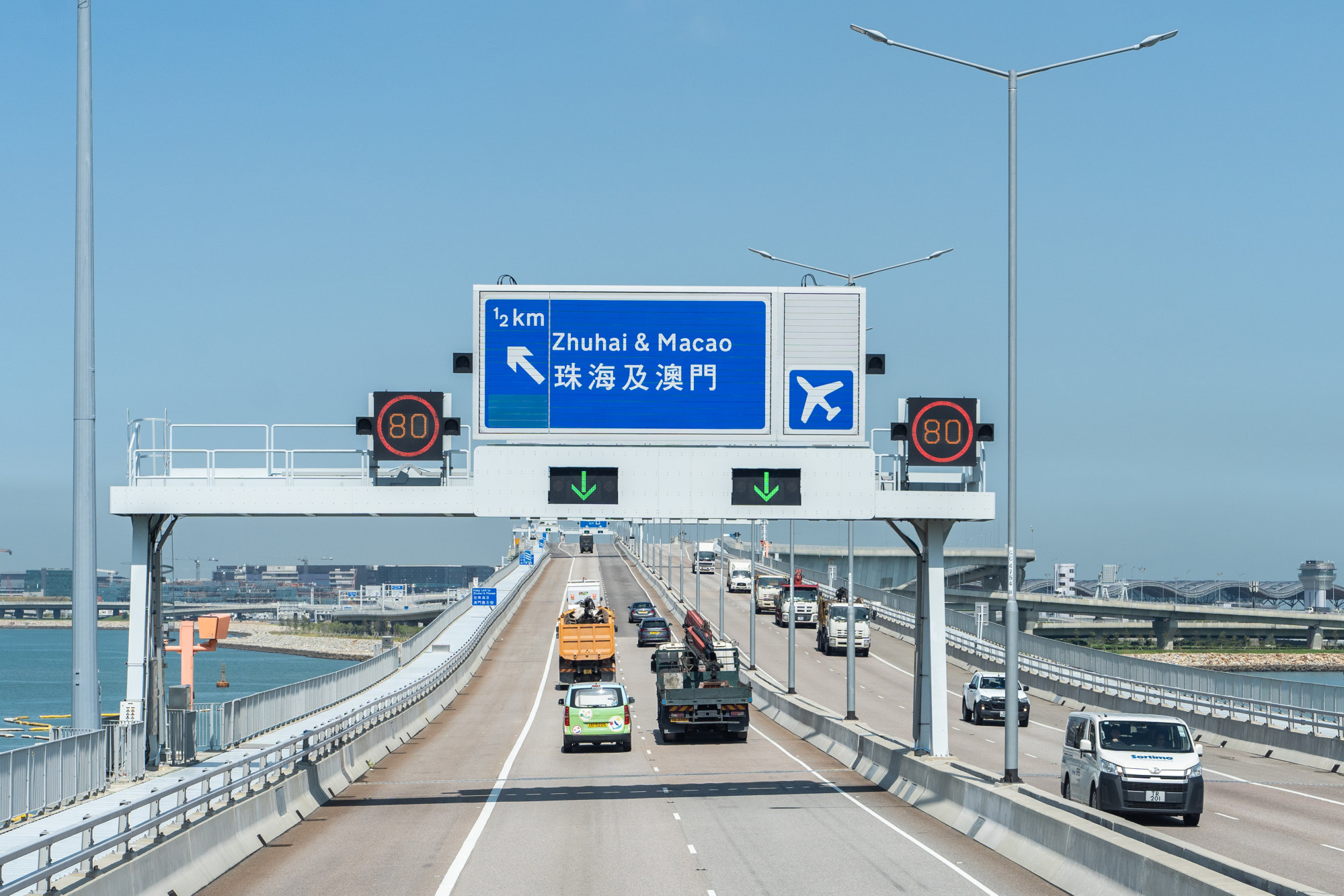
Applications for much-awaited scheme for Hongkongers to drive to mainland China in private cars on mega bridge to open from June 1
- Registrations to open a month before launch of scheme that will allow residents to explore Guangdong province in comfort of own vehicles
- Daily cap set at 200 in first week of operations, rising to 300 by second and may be expanded further upon review
The Transport and Logistics Bureau on Monday released details after Hong Kong and Guangdong provincial authorities agreed to set a maximum of 200 applications per working day in the first week of operations.
Application quotas will increase to 300 from the second week and are set to be gradually expanded upon review.
Will a Shenzhen link to the mega bridge benefit Hong Kong?
The move is expected to boost the development of the Greater Bay Area, Beijing’s plan to link Hong Kong, Macau and nine southern Chinese cities into an economic powerhouse by 2035 to rival Silicon Valley in the United States.
Currently only 16,700 out of more than 570,000 private cars in the city are allowed to cross the border. Such vehicles carry the Chinese character Yue, the official abbreviation for Guangdong province, on their number plates.
Under the scheme, motorists with local identity cards, home return permits issued by mainland authorities and Hong Kong or mainland driving licences will be allowed to drive across the border using the mega bridge and stay up to 30 consecutive days each time, subject to an annual maximum of 180 days.

Those who are successful through the draw can submit their applications for the scheme within a specified period of time starting from 9am on June 1, based on dates randomly assigned by the system.
Drivers are required to hold both private car licences from Hong Kong and the mainland. Applicants should also drive their vehicles to designated vehicle examination premises in Hong Kong for inspection, but they do not have to do so on the mainland.
Hong Kong to scrap departure tax for those headed to airport via mega bridge
Authorities on both sides have also reached a consensus on a “unilateral recognition” arrangement for cross-boundary motor insurance, allowing owners of Hong Kong vehicles to use insurance policies to fulfil relevant requirements.
There is no need to separately purchase traffic accident liability insurance from the mainland. Upon completion of the application procedures, applicants will receive the relevant licences issued by the city’s Transport Department and its mainland counterpart.
Both governments have also agreed to set a daily cap on the number of vehicles heading north.

Successful applicants may book their travelling dates within a designated period from July via the online system starting from the middle of each month.
If bookings are high, there could be a need to allocate designated dates for northbound vehicles through computer balloting. Otherwise, applicants can make bookings on a first-come-first-served basis.
City residents with visas and foreign passports will also be allowed to drive on the mainland if they have the required road permits. Car owners will be exempt from paying mainland customs duties on the value of their vehicles or applying for guarantee arrangements.
Ringo Lee Yiu-pui, president of the Hong Kong Automobile Association welcomed the measures, saying they would offer the city’s vehicle owners more options.
“Hong Kong has little land, many people and many cars. To be honest, there’s not much driving fun here as there are many traffic jams. That’s why many of them are willing to rent cars in places like Taiwan or Singapore. Now there is one more option for them to drive their own cars,” he said.
Hong Kong is world’s most expensive city for driving, global index shows
But he said the lower quota at the start might not be sufficient as spots would be snapped up quickly.
“The number of private cars in Hong Kong eligible for the scheme is about 430,000. Assuming half of them want to go up north, that’s demand from more than 200,000 cars. But now with only a quota of 200, for how many years will some car owners have to queue?” he said.
Lee also said he believed the mainland had the capacity to welcome more cars.
“It’s capable of handling more than 400,000 cars from Hong Kong because there are far more vehicles in Shenzhen. Therefore, it’s not about the issue of capacity, it is about inspecting the cars fast enough,” he said.
Hong Kong tax breaks fuel big switch to electric cars, but where to charge them?
Car owners had to be patient at the beginning as the government needed to figure out whether centralised inspections for cars could be improved, including through exploring options to open more centres to carry out the checks, he said.
The Hong Kong Insurance Authority also said the unilateral recognition policy was a “breakthrough” for the local industry as it introduced cross-border coverage.
“It will help promote the development of the industry in the long run by bringing more diversified insurance products and services with broader coverage to the market, thereby further enhancing the social value of insurance,” said Simon Lam, executive director of general business at the authority.
2 roadblocks facing plan to let more Hong Kong drivers cross mega bridge: experts
The authority said 16 Hong Kong insurers were ready to launch unilateral recognition products for car owners.
Tycoon Allan Zeman, who has a licence to drive on the mainland, said he believed the bridge had been underutilised and the new measures would allow it to be used more, enhancing connectivity between Hong Kong and the bay area.
Lawmaker Chan Yung, a deputy of the country’s top legislature, the National People’s Congress, said he hoped the Hong Kong government could make the application processes as convenient as possible for the public.

